A Sense of Place: Meanderings from Penbanc
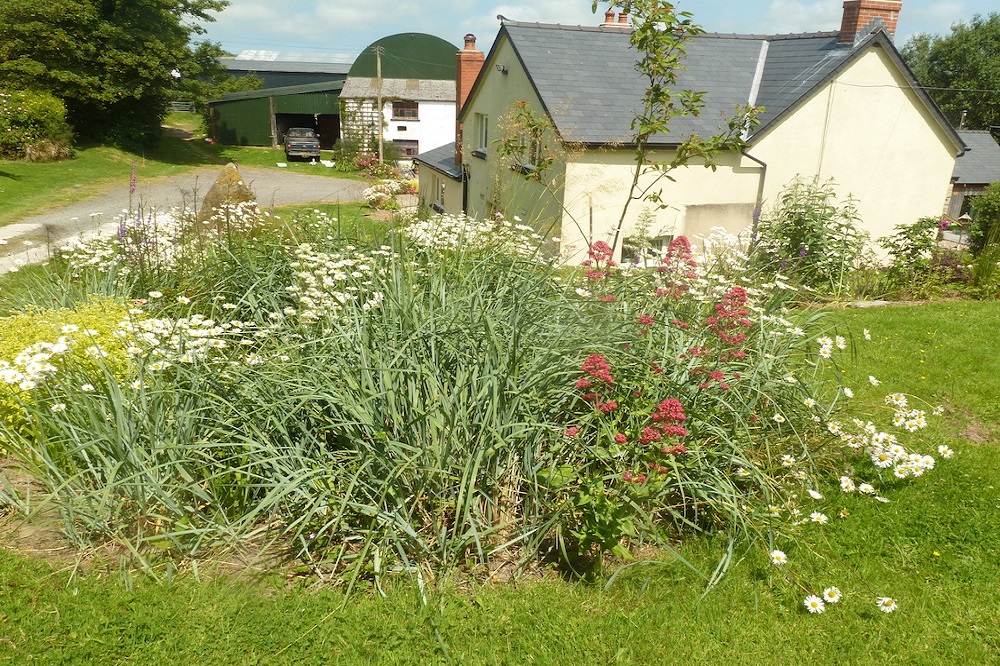
Gaynor Funnell
Cynefin – i. The personal sense of belonging to a place.
ii. The habitual tracks worn by animals on hillsides.
Why do some places hold you more than others? And if there’s a house within such a place, when does that house become a home? And where do the boundaries of a such a home begin and how far do they extend?
For me, home starts as soon as I pass through Glanrhyd – a ‘hamlet on the side of the ford’ – turn right off the lane which heads downwards towards Moylegrove and Ceibwr bay, and cross over the rattling threshold of the cattle grid, which leads down the track towards Penbanc – the house at the top of the bank.
A head-high hedge of hazel, hawthorn, blackthorn and gorse runs down the first part, anchored in place with coils of ivy, bramble, and the apple-scented-leaves-after-rain sweet briar rose; just as the tumbledown barns and decaying gates downwind are held together with fistfuls of turquoise and orange hanks of baler twine.
I know the hedge as well as I know the forget-me-not blue and white toile de joie curtains that frame the upstairs window.
The hedge gives way to open fields, dotted with angled trees.
On some days you can see the distant glimmer of the sea, a pocket handkerchief sliver of Cardigan Bay, and on a clear night, the searchlight beam from the lighthouse at Strumble Head sweeps the fields.
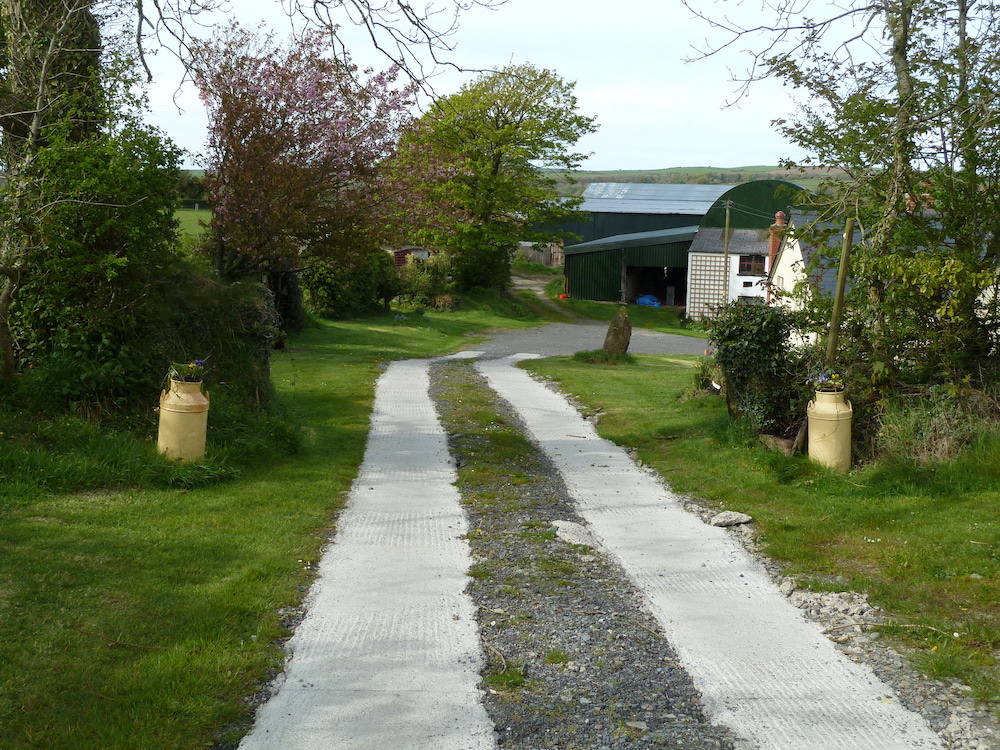
Penbanc lies at the end of the track, on the only level part of its surroundings.
The geology and geography of the place leads to the building being exactly where it is – low enough for protection from the westerly winds and high enough to avoid the winter-flooding from the bottom fields.
Its feet are embedded in the shale its walls are made from and its body is supported with the remains of long dead trees.
A spring appearing magically from the fissures of the shale, provides it with dark-cold water.
There are three small quarries on the land, and three dwellings to go with each one. One house lies broken and empty since its roof disappeared – it’s returning to the land that made it.
My husband Dave and I moved here ten years ago, when Penbanc was a house, not yet a home.
It’s not large and looks like a house a child might draw, with uneven, chalk white walls and a smoking chimney.
It’s not symmetrical – the ‘eye’ of the right-hand window droops downwards and bulges outwards, as if it’s suffering from a facial palsy.
The house needed a lot of work then – tell-tale dots of woodworm; water seeping through the kitchen floor after it rained, an interesting take on an indoor water feature; a crumbling chimney – so now I feel I know every intimate inch of it.
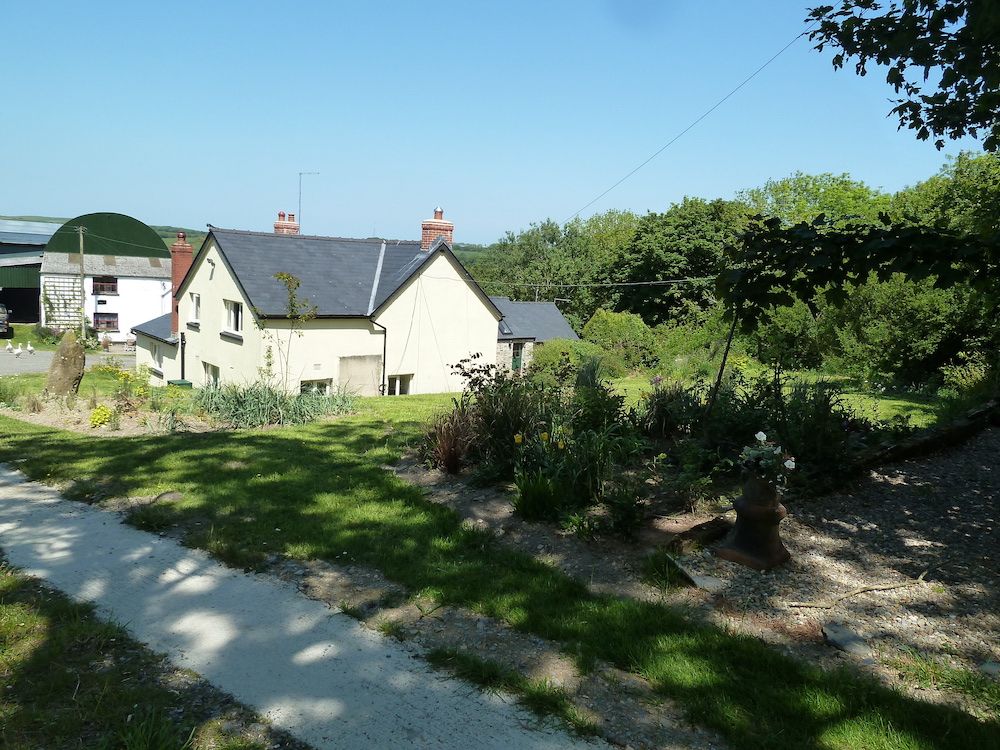
The house faces the wrong way when you come down the track: you arrive at the back of the house, the so-called tradesman’s entrance, whereas the front door – which no-one ever uses but is perfect for placing the Christmas tree against – peers out across the trees.
But if you look closer, under the tangled curtain of sycamore and ash, and hidden by decades of soil and leaves and grass, is an old Green lane.
Hundreds of years ago, it was the main path leading from the cottages lying further down the valley to the nearby town of Cardigan, some four miles away along the metal road.
In winter, looking northwards from Cromlech field, you can just make out the grey spire of Monnington church, which is about two miles away.
Along with the churches in nearby Moylegrove and Bayvil, it’s one of the local churches where some of the previous residents were laid to rest.
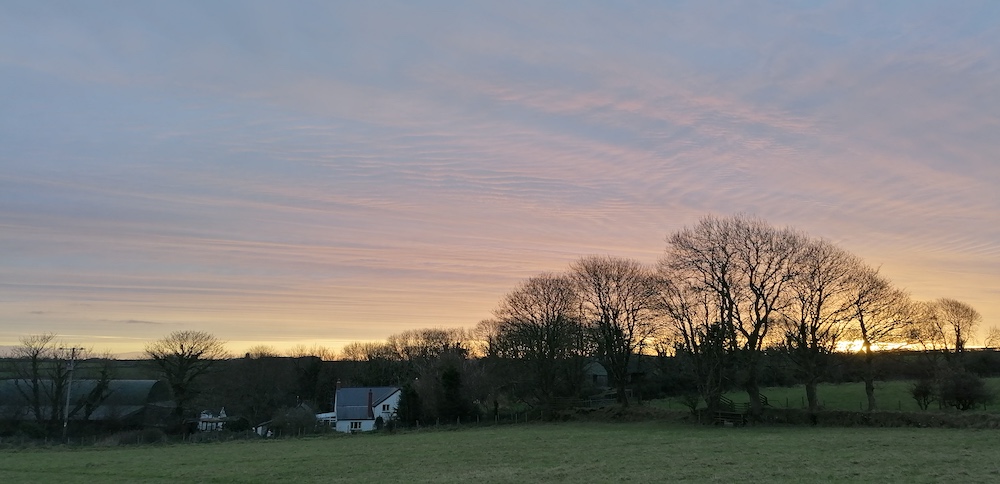
Parts of the house are very old. I have documents written on cracked and crinkled bone-hued parchment dating back to 1734 – the black and red of the calligraphy still clear and readable – but the foundations of Penbanc, or Penbank, or Pen-y-banc, were here long before that.
I know that the Rowlands, the Devonalds, the Biddyrs, the Williams, the Lewis’s all lived here; that David Devonald was born here in 1783, that his son John, born on August 6th, 1815, killed a man during a fight at the annual Eglwyswrw Meigan fair, and had his sentence of hanging commuted to imprisonment in Australia.
He sailed from Liverpool on October 6th, 1835, on The Susan and was released for good behaviour, eventually becoming mayor of a small town, before being killed on Christmas day in 1856 whilst saving a woman from being run over by a train.
Does knowing the names of these long-dead people, and a little of their long-ago lives make me feel more at home? I think it does. It adds another layer to the sense of place, or my sense of place.
There are other gentle reminders of those that have lived here before – children talking from a distance, someone leaning over a bed at night. I’m not as aware of them as I once was.
Perhaps I’ve got used to them, or they’ve got used to me. I don’t see them or the past as a barrier – more of a gateway, maybe.

There is a re-leaded stained-glass window leading into my bedroom which lets the light in and keeps the dark out. It’s the colour of the palest Italian pistachio ice-cream, embraced by a Marian-blue border and it’s the first thing I see in the morning and the last thing I see at night.
For years, it reflected on the souls of a church in Swansea, until it was removed due to the church’s deconsecration. Alan, our roofer, saved it whilst working there and kept it for years before bequeathing it to me.
He also left his ‘special mark’ on part of our roof ‘for protection’ – something he only did for people he liked, or so he said. We had to search to find it – a thumb sized image of a lion staring unblinkingly towards the north star.
Although the walls of the house are physical borders, my sense of home stretches further than the four wonky walls, the outside space being as familiar as the inside.
I’ve spent years digging, planting, pruning, even crowbarring an inhospitable field to create a garden. The trick is to find the right plant for the right spot and leave it to get on with it. There is no room for ‘soft’ gardening in this harsh canvas.
Over the years, I’ve planted over fifty roses, to weave through the trees and soften the slate landscape. They’re mainly historic varieties with gloriously romantic names. I know some won’t survive as the air is too clean and the soil lies too wet, but enough will.

Looking out of my kitchen window, a squat-trunked, badly pruned apple tree forms a visual border. It bears blush-yellow pear-shaped fruit in September that are just about edible – I leave them for the blackbirds.
Next to it is a flowering cherry tree, which was planted by the previous owners over twenty years ago. They’ve moved on, but the cherry remains, resplendent with marshmallow blossom in the spring and flames of ochre, mustard and magenta in autumn.
I hang birdfeeders from the lower branches and have to tip-toe through swathes of the tulip-shaped blooms of Crocus tommasinianus, the woodland crocus, which open like amethyst starfish in the sun, to reach them.
Every year, the bulbs incrementally slide down the slope and every year I try to plant some elsewhere. They stubbornly refuse to thrive however – they know their place.
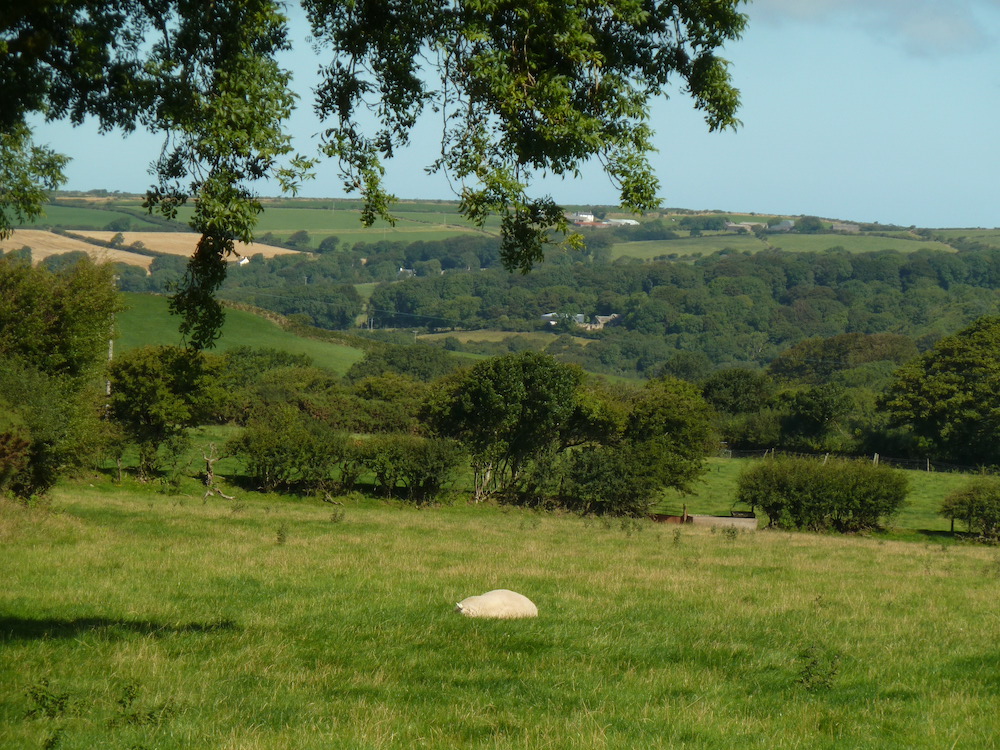
In Gwair field, the field in front of the trees which are the physical border of our land, lies the pumphouse for the spring that feeds the house, and I can just see it from the kitchen window. The pumphouse sits in a small man-made flattening in this land of slopes, and dips and hollows.
Three children of the house used to play cricket here, and there are tales of one of their cricket bats ‘twitching as if it had a life of its own’ as they crossed the field where the pumphouse is now. It’s the exact spot that a water diviner found the spring years later.
I’d like to say I know the sky towards the west as much as I know the rest of my landscape, but I don’t.
Every day is different, and I don’t possess enough words to describe adequately the sunsets of burnt umber, amber, coral, cerise and peach, the February days of woodpigeon-grey, pewter and pearl, and the crystalline pinholes of stars on a soft September evening.
Last summer I sat outside, binoculars in hand, to try and spot Elon Musk’s Starlink satellites. I saw them once – a necklace of tiny silver dots travelling from left to right against the inky sky. A different boundary being explored, rightly or wrongly.
Technically, we all own the airspace above our properties: “Whoever owns the soil, holds title all the way up to the heavens and down to the depths of hell”. Today that’s limited to about 500 feet above apparently – another boundary, but an invisible one.
There’s an invisible boundary inside the house now. Dave passed away in the front room eighteen months ago, and even though I’ve painted, carpeted, re-curtained, the room doesn’t feel like home anymore, not yet.
It’s as if there’s an invisible gate I have to pass through to walk into it, taking a mental and physical breath in before I do so. And mentioning him is another barrier to cross.
He’s added another layer to this house full of the land and its ghosts, and maybe the people that live here in the future will hear his voice with the others – swearing as he hits his head on another low beam.
Gaynor Funnell is the winner of the Nigel Jenkins award for 2022. We are delighted to be publishing a series about Penbanc over the coming months, with support from the H’mm Foundation.
Support our Nation today
For the price of a cup of coffee a month you can help us create an independent, not-for-profit, national news service for the people of Wales, by the people of Wales.





Wonderful descriptions of, what is clearly, a wonderful place! Lyrical and lively, your writing lets the reader ‘see’, and feel, the magic of Penbanc. Loved this.
I loved this, so looking forward to the next installment 💚